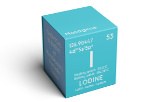
Radiolabeled compounds
Isotopic labeling or radioactive labeling is a technique used to track the passage of an isotope (an atom with detectable variations) during a reaction, a metabolic pathway or in the cell. The compound is "labeled" by replacing specific atoms by their isotopes. The compound is then added to the reaction. The position of the isotopes in the products of the reaction is measured to determine the path of the atoms during the reaction. The nuclides used for isotopic labeling may be stable or radioactive. In the case of radioactive isotopes, radioactive marking or radio marking is used.
With isotopic labeling, there are different ways of detecting the presence of isotopes: their mass, their mode of vibration, their radioactivity. Mass spectrometry detects the mass difference while infrared spectrometry detects the difference in vibration mode. Magnetic nuclear resonance detects atoms with different gyromagnetic ratios. Radioactivity can be detected by an ionization chamber or gel autoradiography.
The most widely used radioisotopes for isotopic labeling are Carbon 14 (C-14) and Hydrogen 3 (H-3).


